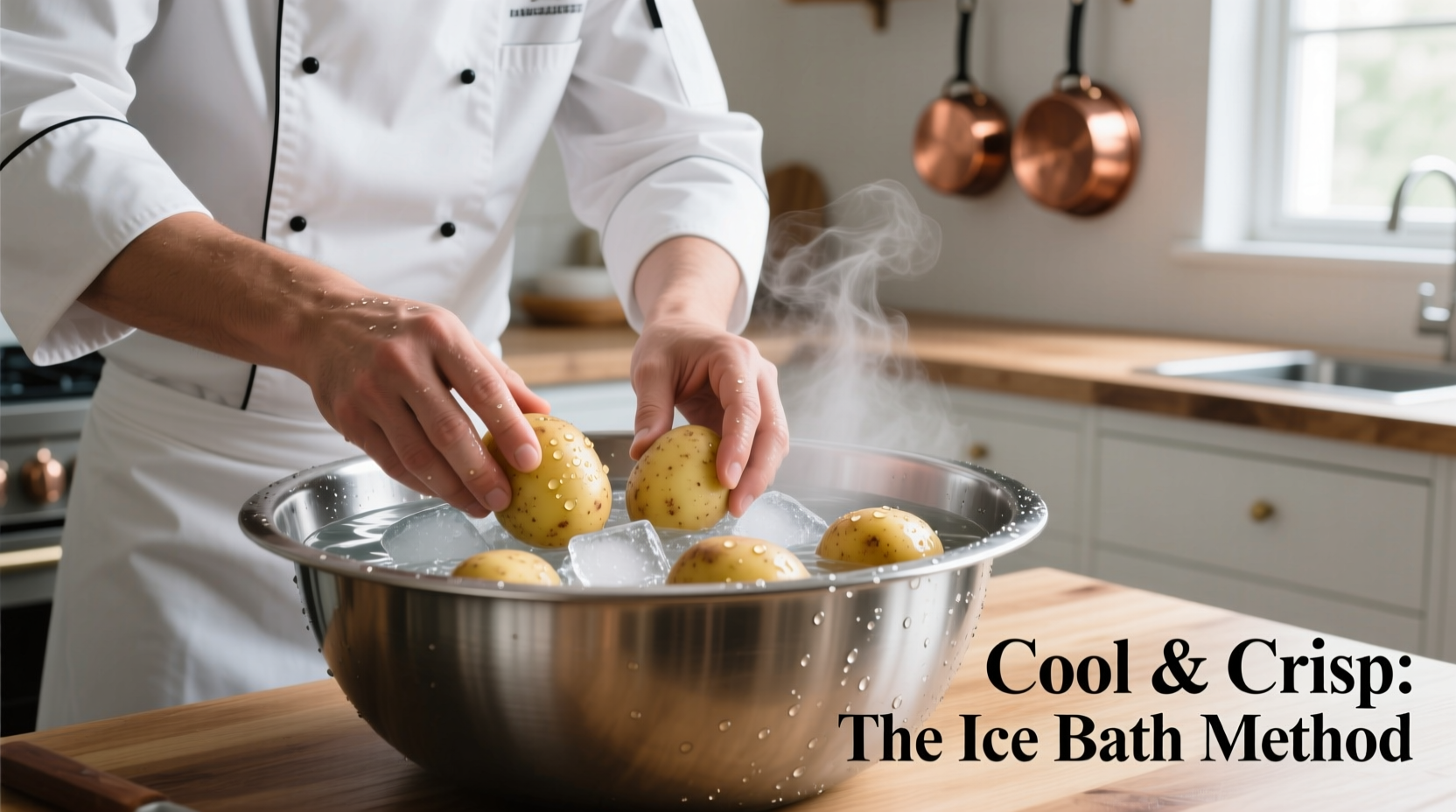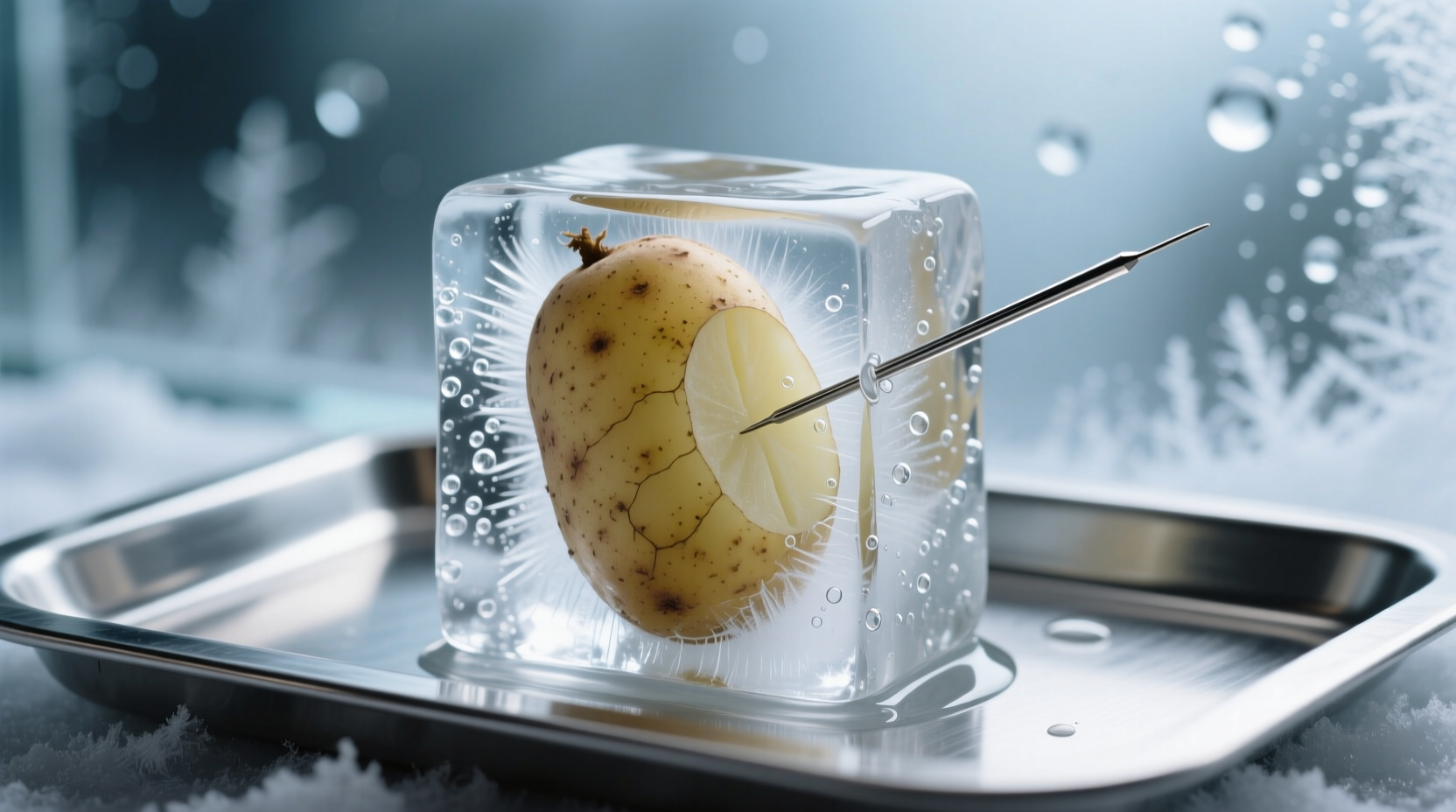Understanding the Confusion: What "Potato Needle Ice Cube" Really Means
When home cooks search for "potato needle ice cube," they're typically searching for one of several legitimate kitchen techniques—but the exact phrase doesn't correspond to any standard culinary tool or method. Let's clarify what you might actually be looking for and provide practical solutions for your cooking needs.
Common Misinterpretations Explained
Based on culinary research and professional kitchen experience, here are the most likely concepts behind this search query:
1. Ice Water Baths for Potato Preparation
Many professional chefs use ice water baths when preparing potatoes for specific dishes. When you cut potatoes for salads or fries, placing them in ice water serves two critical purposes:
- Removes excess starch that causes browning
- Maintains crisp texture by slowing enzymatic reactions
This technique is particularly valuable when preparing potato salads or double-fried French fries. The ice water doesn't make the potatoes freeze—it simply keeps them cold while removing surface starch.
2. Potato Ricers vs. "Potato Needles"
The term "potato needle" likely confuses two different tools:
| Actual Tool | Function | Common Misunderstandings |
|---|---|---|
| Potato Ricer | Extrudes cooked potatoes through small holes for smooth mash | "Ricer" misheard as "needle" due to similar pronunciation |
| Vegetable Corer | Removes cores from potatoes or apples | Mistaken for "needle" due to cylindrical shape |
| Ice Pick | Breaks up ice cubes | Confused with potato preparation tools |
3. The "Needle Ice" Geological Phenomenon
"Needle ice" refers to a natural geological formation where ice grows in hair-like strands from soil, typically in spring or fall when soil temperatures hover near freezing while air temperatures drop below freezing. This phenomenon, documented by the U.S. Geological Survey, occurs in moist soil conditions but has no culinary application with potatoes.
The Science Behind Potatoes and Freezing
Understanding why certain potato-ice combinations work (and others don't) requires basic food science knowledge:
Why Raw Potatoes Don't Freeze Well
Potatoes contain approximately 80% water. When frozen raw, the water expands as it turns to ice, rupturing cell walls. This causes two problems when thawed:
- Texture becomes mushy and waterlogged
- Flavor compounds leach out during thawing
The North Carolina State University Extension confirms that raw potatoes should never be frozen without proper preparation.
Proper Technique for Freezing Potatoes
If you want to freeze potatoes successfully, follow this professional chef method:
- Peel and cut potatoes to desired size
- Blanch in boiling water for 3-5 minutes
- Immediately transfer to ice water bath for same duration
- Dry thoroughly on clean towels
- Flash freeze on baking sheet before transferring to containers

Practical Applications You Can Use Today
Here are three immediately useful techniques that might be what you were actually searching for:
1. Perfect French Fries Using Ice Water
For crispier fries, professional chefs use a double-fry method with an ice water step:
- Soak cut potatoes in ice water for 30 minutes
- Fry at 300°F (150°C) for 5 minutes
- Cool completely (ice water dip optional for extra crispness)
- Final fry at 375°F (190°C) until golden
2. Preventing Potato Discoloration
When preparing potato salads or dishes requiring cut potatoes ahead of time:
- Place cut potatoes in bowl of cold water with ice cubes
- Add one tablespoon of lemon juice or vinegar per quart of water
- Store in refrigerator for up to 24 hours
3. Freezing Cooked Potato Dishes
While raw potatoes don't freeze well, these cooked preparations do:
- Mashed potatoes (with added cream or butter)
- Potato soups and chowders
- Roasted potato wedges
- Potato casseroles
Always cool completely before freezing and use within 3 months for best quality.
Debunking Common Myths
Let's address several misconceptions that might have led to your "potato needle ice cube" search:
Myth: Adding Potatoes Speeds Up Freezing
Contrary to popular internet claims, placing a potato in water does NOT make it freeze faster. The University of Minnesota Extension confirms that water freezes based on its thermal properties, not contents. Potatoes actually slow freezing due to their density and water content.
Myth: Special "Potato Needles" Exist for Ice Cubes
No professional kitchen tool matches this description. What might be confused with this term:
- Ice picks (for breaking ice)
- Potato eyes removers (small pointed tools)
- Vegetable corers
When Ice Water Actually Helps with Potatoes
Understanding the specific contexts where ice water benefits potato preparation prevents wasted effort:
| Scenario | Ice Water Helpful? | Recommended Duration | Alternative Without Ice |
|---|---|---|---|
| Preparing potato salad | Yes | 15-30 minutes | Cold tap water with vinegar |
| Making French fries | Yes | After first fry, 2-3 minutes | Air cooling on rack |
| Freezing raw potatoes | No | N/A | Blanching only |
| Preventing browning | Moderately | Until ready to cook | Acidulated water |
Professional Chef Tips for Potato Success
As someone who's worked in both professional kitchens and home cooking environments, here are my top recommendations:
- For salads: Always use an ice water bath after cutting to maintain firm texture
- For fries: The ice water dip after the first fry creates steam pockets that lead to extra crispiness
- For freezing: Never freeze raw potatoes—always blanch first
- For mashed potatoes: Use warm milk/butter, not cold, for best texture
Conclusion: Practical Takeaways
While "potato needle ice cube" isn't a recognized culinary term, understanding the related techniques can significantly improve your potato dishes. The ice water bath method remains one of the most valuable professional techniques for maintaining potato texture, particularly for salads and fries. Remember that proper potato preparation depends on understanding the science behind starch removal and cell structure preservation—not mythical kitchen tools.











 浙公网安备
33010002000092号
浙公网安备
33010002000092号 浙B2-20120091-4
浙B2-20120091-4